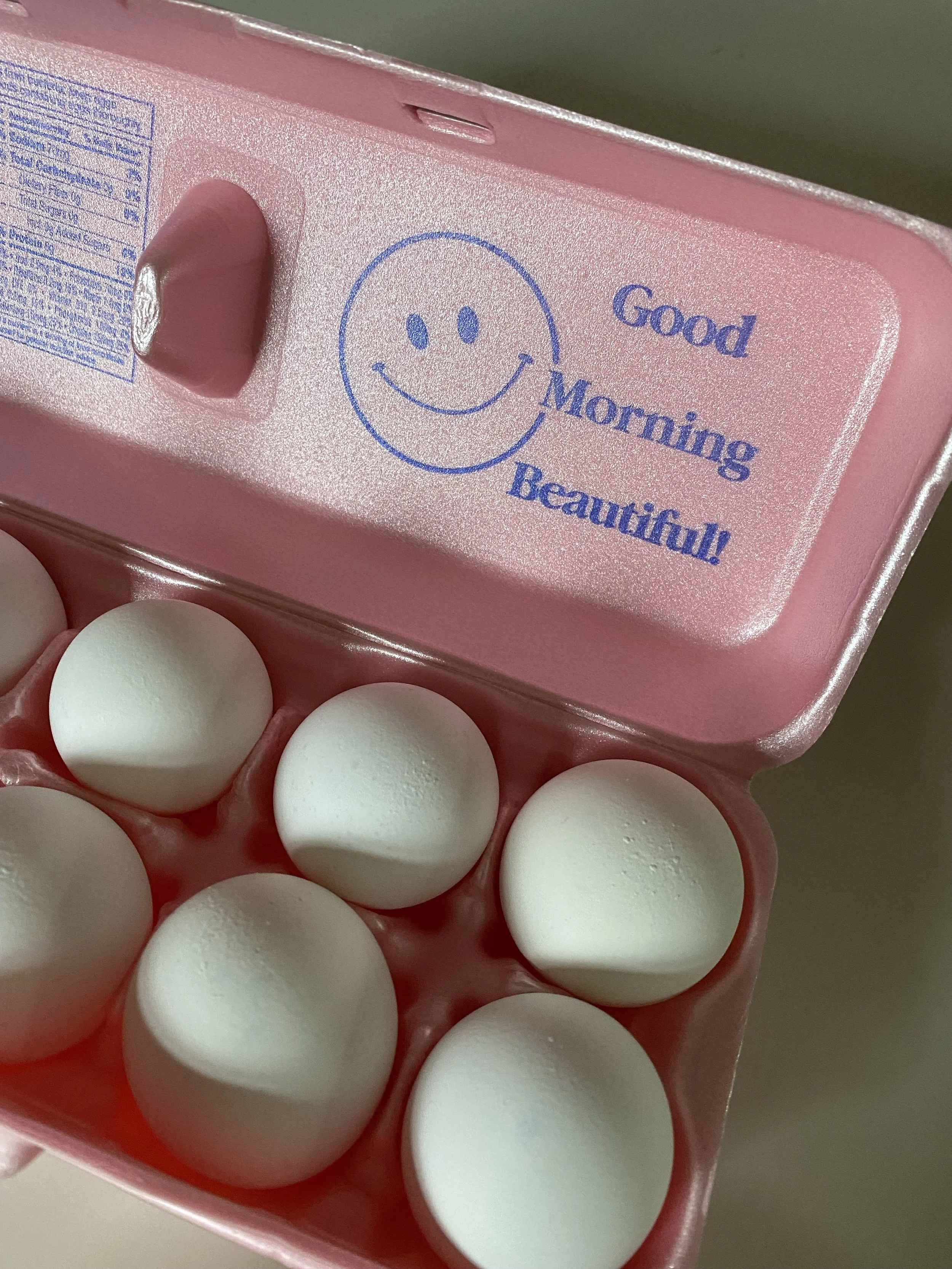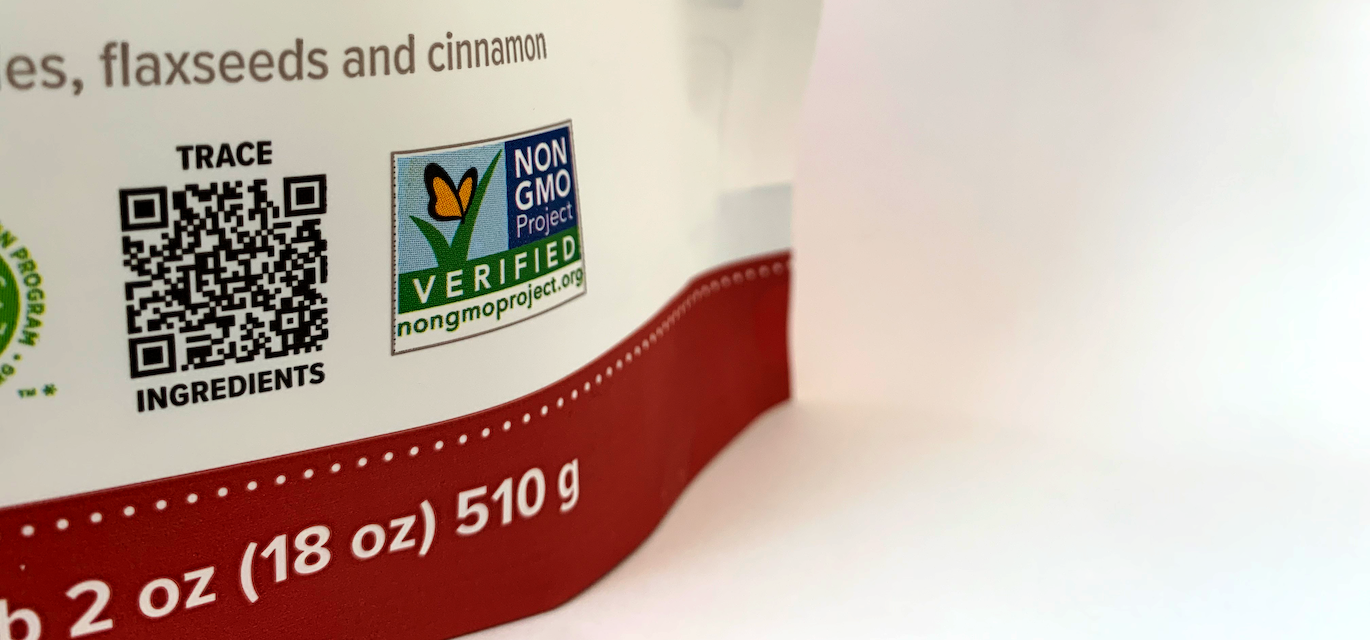Picture this: a customer picks up your product, scans a simple code with their phone, and suddenly they're watching your founder explain why they started the company, or getting a personalized recipe that uses your product, or learning about the farm where your ingredients were grown. That's not science fiction. That's smart packaging, and it's happening right now in Canadian grocery aisles.
But here's the thing about the "smart packaging revolution": everyone's talking about it, but most brands are doing it wrong. They're slapping QR codes on everything like digital confetti, hoping something sticks. Meanwhile, the brands that understand how to make packaging genuinely intelligent are turning every product into a marketing opportunity that keeps working long after the purchase.
What Smart Packaging Actually Means (Hint: It's Not Just QR Codes)
When most people hear "smart packaging," they think QR codes and maybe some fancy foil that changes colour. That's like thinking "smart home" just means clapping to turn lights on and off. Real smart packaging is about creating connections, solving problems, and building relationships, all through the strategic use of technology integrated seamlessly into design.
Smart packaging encompasses:
Interactive elements: QR codes, NFC chips
Responsive materials: Temperature indicators, freshness sensors, time-based changes
Connected experiences: Links to apps, websites, or digital content
Data collection: Anonymous insights about consumer behaviour and preferences
Personalization: Customized experiences based on purchase history or preferences
The magic happens when these elements work together to create packaging that's not just smart, it's also helpful.
Why Canadian Consumers Are Ready for Smart Packaging
Here's what might surprise you: Canadian consumers aren't just ready for smart packaging, they're already using it more than you think. Recent studies show that 73% of Canadians have scanned a QR code in the past six months, and that number jumps to 89% for consumers under 35.
The Canadian Smart Packaging Landscape:
High smartphone adoption: 85% of Canadians own smartphones
Tech-forward but practical: Canadians adopt technology that solves real problems
Privacy-conscious: More willing to engage when data use is transparent
Sustainability-minded: Smart packaging that supports environmental goals resonates strongly
Why Now? The pandemic accelerated digital adoption across all age groups. Your grandmother who never used to touch anything digital? She's probably ordering groceries online and expects her favourite brands to meet her where she is technologically.
The Five Types of Smart Packaging That Actually Work
Not all smart packaging is created equal. Based on our work with Canadian CPG brands, here are the approaches that drive real engagement and business results:
1. The Storyteller: Building Brand Connection
What It Is: Packaging that uses technology to tell your brand story in compelling, multimedia ways.
How It Works: QR codes or NFC chips that link to video content, founder stories, behind-the-scenes footage, or detailed product information.
Best For: Premium brands, artisanal products, or any brand where story and values drive purchase decisions.
🍁Canadian Example: A craft brewery uses QR codes to link to videos of their brewmaster explaining the inspiration behind each seasonal beer, plus food pairing suggestions from local chefs.
The Success Factor: Content that feels exclusive and valuable, not like an advertisement. Think Netflix documentary, not 30-second commercial.
2. The Helper: Solving Real Consumer Problems
What It Is: Smart packaging that makes products easier to use, store, or get the most value from.
How It Works: Links to usage instructions, recipe ideas, storage tips, guides, or customer support.
Best For: Complex products, new categories, or anything that benefits from education.
🍁Canadian Example: A plant-based meat alternative includes a QR code linking to cooking tips specific to Canadian climate conditions (because yes, altitude and humidity affect cooking), plus recipes developed by Canadian chefs.
The Success Factor: Genuinely useful information that customers actually want to access.
3. The Authenticator: Building Trust and Transparency
What It Is: Packaging that provides verification, supply chain transparency, or quality assurance information.
How It Works: Track-and-trace capabilities, authenticity verification, sourcing information, or quality testing results.
Best For: Premium products, supplements, organic foods, or any category where trust is crucial.
🍁Canadian Example: An organic maple syrup producer uses smart packaging to show the exact farm location, harvest date, and third-party testing results for each batch.
The Success Factor: Information that builds confidence and justifies premium pricing.
4. The Personalizer: Creating Individual Experiences
What It Is: Packaging that adapts based on who's scanning it, when they're scanning it, or what they've purchased before.
How It Works: Dynamic content that changes based on scan location, time, or linked customer data.
Best For: Subscription products, loyalty programs, or brands with diverse product lines.
🍁Canadian Example: A protein powder brand provides different workout suggestions and nutrition advice based on whether the customer is scanning in Vancouver (outdoor activities) or Toronto (gym-focused).
The Success Factor: Personalization that feels helpful, not creepy.
5. The Activator: Driving Immediate Action
What It Is: Smart packaging that encourages specific behaviours or drives immediate engagement.
How It Works: Exclusive offers, loyalty program enrolment, social sharing prompts, or gamification elements.
Best For: Impulse categories, new product launches, or brands building customer databases.
🍁Canadian Example: A snack brand includes instant-win games accessible through packaging, with prizes ranging from free products to experiences with Canadian influencers.
The Success Factor: Clear value exchange—customers get something meaningful for their engagement.
Source: Pınterest
The Technology Menu: What's Actually Available (And What It Costs)
Let's get practical. Here's your menu of smart packaging technologies, with real Canadian pricing and implementation considerations:
QR Codes: The Gateway Drug
Pros:
Universal smartphone compatibility
No special printing requirements
Easy to update content without changing packaging
Canadians are familiar with QR codes post-pandemic
Cons:
Requires active customer participation
Can look cluttered if not designed well
Generic technology that doesn't differentiate your brand
Pro Tip: Dynamic QR codes that can be updated with new content are worth the slightly higher cost for most brands.
NFC (Near Field Communication): The Elegant Choice
Pros:
Seamless "tap to interact" experience
Works through most packaging materials
More exclusive feeling than QR codes
Better integration with mobile wallets and apps
Cons:
Higher cost per unit
Limited to newer smartphones
Requires customer education about the technology
Canadian Consideration: NFC adoption in Canada is high due to widespread contactless payment use, but consumer awareness for packaging applications is still developing.
Smart Inks and Materials: The Show-Offs
Best For: Products where freshness, temperature, or time matter
Options:
Thermochromic inks: Change color with temperature
Photochromic inks: React to UV light
Time-based indicators: Show product age or freshness
Tamper-evident features: Security and authenticity
The Reality Check: These look amazing in presentations but require careful consideration of manufacturing complexity and consumer education.
source: pınterest
Smart Packaging Design: Where Technology Meets Aesthetics
Here's where most brands fail: they treat smart packaging elements as afterthoughts. The QR code gets slapped on wherever there's space, usually looking like a digital wart on otherwise beautiful packaging. Smart packaging works best when the technology is integrated into the design from the beginning. This means:
Design Integration Principles
1. Tech as Design Element Smart packaging elements should enhance your visual design, not compete with it. QR codes can be incorporated into patterns and NFC indicators can become part of your logo system.
2. Clear Call-to-Action Canadian consumers appreciate clear, honest communication. Don't make them guess what scanning will do. "Scan for recipes," "Tap for freshness info," or "Discover our story" work better than generic "Scan me" messages.
3. Visual Hierarchy Smart elements should fit naturally into your packaging's information hierarchy. The most important smart element might deserve prime real estate, while secondary features can be more subtle.
4. Accessibility Considerations Design with different user abilities in mind. High contrast for QR codes, clear instructions, and alternative ways to access key information ensure broader usability.
The Eye Candy Design Smart Packaging Process
Phase 1: Strategy First Before choosing technology, we define what success looks like. What behaviour do you want to drive? What information do consumers need? How does this support your broader brand goals?
Phase 2: Content Planning Smart packaging is only as good as what it connects to. We plan the entire customer experience, from first scan to long-term engagement.
Phase 3: Technology Selection Choose the right tool for the job, considering budget, timeline, target audience, and manufacturing constraints.
Phase 4: Design Integration Seamlessly integrate smart elements into beautiful, functional packaging that works whether customers scan or not.
Phase 5: Content Development Create compelling, valuable content that justifies the customer's time and attention.
Phase 6: Testing and Optimization Test everything—scan success rates, content engagement, conversion metrics: and optimize based on real user behaviour.
Source: pınterest
The Content Strategy Behind Smart Packaging
The biggest smart packaging failures happen when brands focus on the technology and forget about the content. Your QR code might scan perfectly, but if it leads to boring, sales-y content, customers won't scan again.
Content Types That Drive Engagement
Educational Content: How-to videos, usage tips, ingredient education
🍁Canadian Angle: Focus on local applications, climate considerations, or regulatory information specific to Canada
Behind-the-Scenes: Manufacturing processes, sourcing stories, team introductions
🍁Canadian Angle: Highlight Canadian suppliers, local partnerships, or community involvement
Exclusive Access: Early product previews, special offers, members-only content
🍁Canadian Angle: Canada-exclusive products, regional partnerships, or local event access
User-Generated Content: Customer stories, recipe submissions, photo contests
🍁Canadian Angle: Celebrate Canadian customers, regional variations, or local traditions
Real-Time Information: Freshness indicators, inventory alerts, seasonal recommendations
🍁Canadian Angle: Weather-based suggestions, regional availability, or local seasonal considerations
Content Planning Framework
The 80/20 Rule: 80% of your smart packaging content should provide value to customers, 20% can promote your brand.
The Frequency Factor: Plan for ongoing content updates. Stale content kills engagement faster than broken technology.
The Canadian Context: Adapt global content for Canadian audiences, regulations, and cultural nuances.
Common Smart Packaging Mistakes (And How Brands Can Avoid Them)
Mistake #1: Technology for Technology's Sake
The Problem: Adding smart elements without clear purpose or customer benefit The Fix: Start with customer problems, then find technology solutions
Mistake #2: The "Set It and Forget It" Approach
The Problem: Creating smart packaging content once and never updating it The Fix: Build content update schedules into your marketing calendar
Mistake #3: Ignoring Privacy Concerns
The Problem: Collecting data without clear value exchange or transparent privacy policies The Fix: Be explicitly clear about what data you collect and how it benefits customers
Mistake #4: Over-Complicating the Experience
The Problem: Multiple smart elements competing for attention or complex multi-step processes The Fix: Keep interactions simple and focus on one primary smart feature per package
Mistake #5: Forgetting the Non-Digital Experience
The Problem: Making smart elements essential to understanding or using the product The Fix: Smart packaging should enhance the experience, not gate it
The Economics of Smart Packaging: ROI That Makes Sense
Let's talk numbers. Smart packaging requires investment, but the returns can be significant when implemented strategically.
Typical Investment Breakdown
Design and Development: $10,000 - $75,000 (depending on complexity)
Technology Costs: $0.01 - $0.50 per package (ongoing)
Content Creation: $10,000 - $50,000 (initial), $2,000 - $10,000 (monthly updates)
Analytics and Optimization: $2,000 - $5,000 monthly
Revenue Benefits
Premium Pricing: 10-15% price increase often justified by enhanced experience
Customer Lifetime Value: 25-40% increase due to stronger brand connection
Market Expansion: Access to tech-savvy consumer segments
Reduced Support Costs: Self-service information reduces customer service load
Break-Even Timeline
Most CPG brands see positive ROI on smart packaging within 8-14 months, primarily driven by:
Increased customer engagement and loyalty
Premium positioning and pricing
Reduced customer acquisition costs through viral sharing
Operational efficiencies from digital customer service
The Smart Choice for Brands
Smart packaging isn't about impressing people with technology—it's about building stronger relationships with your customers by being genuinely helpful. The brands that succeed will be those that use technology to solve real problems and create meaningful connections.
The market offers unique advantages for smart packaging innovation:
Tech-savvy but practical consumers who adopt useful technology
Strong privacy and sustainability values that smart packaging can support
Diverse, multicultural markets that benefit from personalized experiences
Premium positioning opportunities in a market that values quality and innovation
Ready to make your packaging work smarter, not harder? The smart packaging revolution is just beginning, and brands have the opportunity to lead rather than follow.
Because in the end, the smartest packaging isn't about the technology you add—it's about the connections you create.





